The world is upside down! An attempt to capture aerobatics in a model: Zlin Z-526AFS in its proper element
About the idea of an aerobatics presentation
Sometimes it is worth looking at the well-known or seemingly self-evident from an unusual perspective. We are all familiar with the term "aerobatics" and everyone will probably immediately have images of spectacularly curving, controlled spinning or looping aircraft in their mind's eye, but, strange as it may sound, is there actually any other technical means of transport whose locomotion has been elevated to an art form in its own right?
I can't think of anything comparable; only flying seems to be able to be perceived as an aesthetic pleasure from the ground. The choreographed dance in the sky serves no other purpose than to be enjoyed, evaluated and appreciated within the rules of aerobatics. Seen in this light, "aerobatics" is indeed very remarkable!
It is common knowledge that the hour of wilful aerobatics struck in the first few years after the mastery of flying. Igor Nestorov's first loop in 1913 earned him a charge of "endangering the flying machine" and even several days in prison, but also an entry in the history books. In the same year, Alfred Friedrich, however, reaped nothing but praise and recognition for the first deliberately initiated (and also stopped!) spin.
The First World War not only advanced the development of aircraft technology with seven-league boots, but also set completely new standards in terms of flight manoeuvres and control of the aircraft in a wide variety of flight conditions. It is not without reason that flight manoeuvres developed in those years, such as the "Immelmann", are still part of the standard programme at air shows, now detached from their military background. The extent to which the aeronautical optimisation of the material and the ability to master the aircraft perfectly is still the basis for the military use of aircraft is demonstrated by the magnificent skills of the many aerobatic teams that are maintained by the various air forces around the world.
Another source of aerobatics is certainly the high show value of aeroplanes soaring across the sky.The attraction of flight manoeuvres that are hardly thought possible and the thrill of latent danger that always accompanies them are combined with the intrinsic aesthetic value of elegant movement, metal glistening in the sun and the haunting sound of engines working under varying loads.
A distinction between "stunt flying" - where the main focus is on the aforementioned aspects of show value - and the differentiated "aerobatics" is telling!
Here things are slightly different: "Aerobatics" is practised as a high-performance sport in accordance with precise rules. Since 1961, the CIVA, the aerobatics commission of the FAI, has been using the Aresti symbols to label precisely defined aerobatic manoeuvres.This provides national and international aerobatic competitions with a precise set of rules for preparation and execution as well as for the subsequent assessment of pilots. "Aerobatics is therefore never just an adrenaline-fuelled game with spectacular flying manoeuvres, but always a precisely calculated and equally safely executed demonstration of flying skill at the highest level.
This also leads to one last aspect of aerobatics that I would like to mention. Training in aerobatics enables pilots to control their aircraft safely - and thus also serves to increase safety in sport flying in general. Aerobatic training is therefore increasingly being included in pilot training programmes.
About the construction process
At the beginning of the text I spoke of a worthwhile change of perspective: this thought was also what led me to this unconventional representation of the model!
As good as aeroplanes can look on their wheels on the ground, the sleek lines of some designs encourage you to venture into a "flying" representation.The aim here is to show the aeroplanes in their appropriate element. An aerobatic legend like the Zlin Z-526 Akrobat also requires a special staging: I really wanted to depict an aerobatic aeroplane here!
This decision was made easier by the small amount of conversion work required. The only actual modifications were to the undercarriage, which had to be shown retracted - this proved to be easy to do - and the improvisation of a "rotating" propeller. I tried to do this in a tried and tested way by airbrushing two thin strips of transparent film. All I had to add was a pilot. For this I chose a WW2 veteran of the US Navy from "PJ Production". After a little surgery to remove his goggles and a partial re-dressing with a pilot's overall cut from Tamiya tape, it was done.
For the stand, I had planned to bend a thick metal wire into as elegant an arch as possible, which I would attach to the base plate with a hole at its lower end. The wire would also carry the smoke, which would trace the flight path of the Zlin in accordance with air show custom. To do this, conventional cotton wool would simply be woven around the wire. Depending on whether this was done more tightly or less densely, the result would be a cloud of smoke spreading backwards. In order to give the cotton wool a permanent fit on the metal, the wire should be easily prepared with standard gel glue before applying the cotton wool.
Well, that was the plan. What can I say? This plan could also be implemented quite passably as described!
About the original
The Zlin Z-526AFS shown here with the characteristic nose art of a cartoon dwarf comes from Eduard's excellent new kit. The Zlin Akrobat with the registration OOK-CXA took part in the 1975 European Championships in Esbjerg, Denmark, in the form shown here; it was flown by the Czechoslovak aerobatics legend Jiri Kobrle. Over the next few years, the aircraft was operated by the South Bohemian Aero Club under different liveries. On 8.May 2012, now in the possession of the Budweis Aero Club, it was tragically lost in a serious landing accident,.
This build concludes my last "double" on the subject of the Zlin Z-526 for the time being. I would therefore like to refer all those interested in a more detailed kit description to my first article on the Z-526AFS "I-1010" built in parallel.
The kit with all its attractive variants and possibilities appealed to me so much that I will certainly tackle a Zlin of the "Trener" or "Akrobat" series again when the opportunity arises. So it will come as no surprise that I warmly recommend these Zlin kits from Eduard to anyone who is interested!
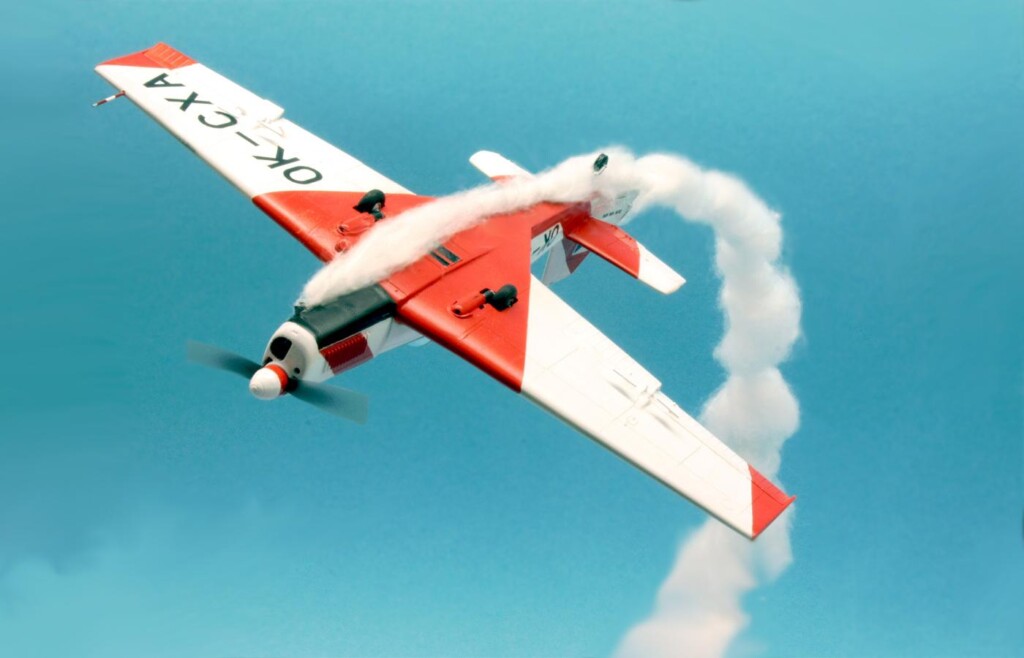
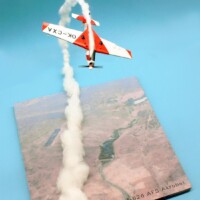
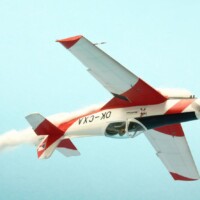
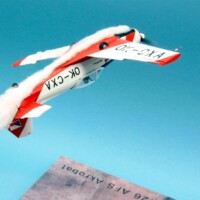
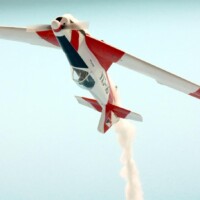
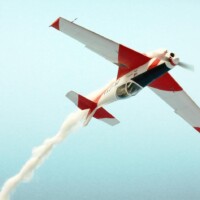

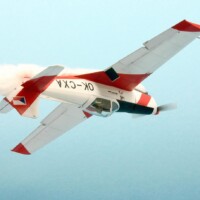
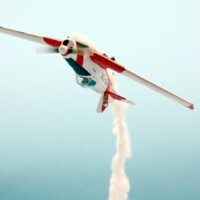
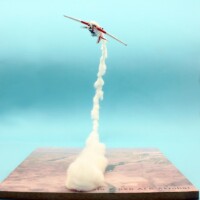
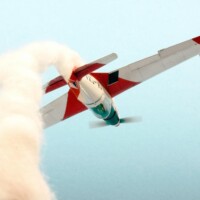
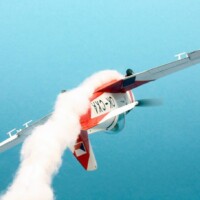
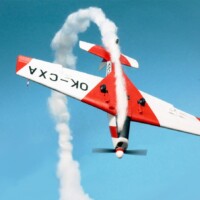
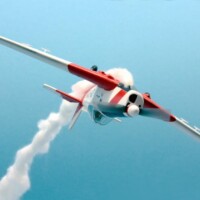
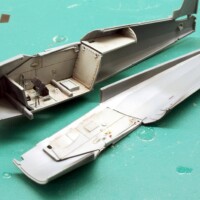
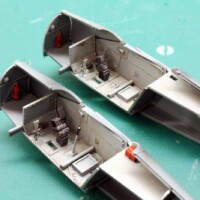
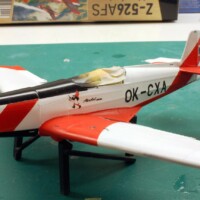
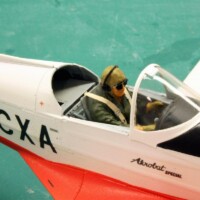
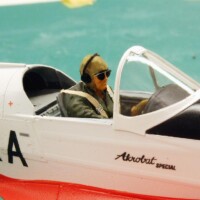
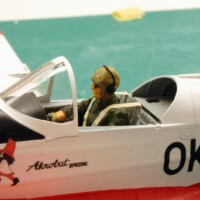
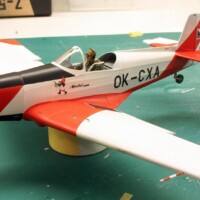
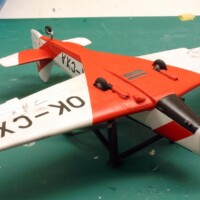

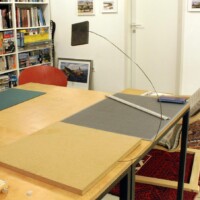

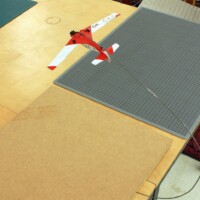
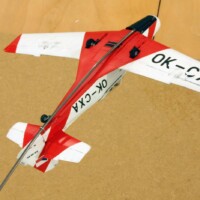

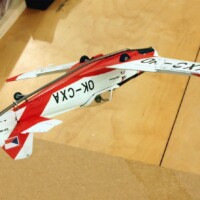

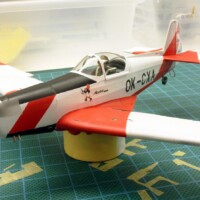
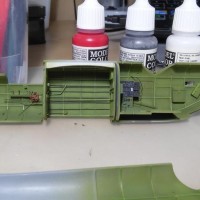



(@rosachsenhofer) Roland that is sooo impressive! I love it! It's all very clever and I love the opaque prop blade to give it the illusion that it's spinning too. A sensational build. Well done 🙂
Thank you! I really appreciate your words!
You captured the adventure of aerobatics admirably. Very nicely done, Roland.. Congrats!
Thank you Gary! I certainly appreciate that!
WOW! That is a fantastic presentation! Congrats! Now I need to do something similar with a Blue Angels aircraft- now where did I put that high altitude shot of Pensacola NAS Sherman Field?...
Thanks Dan- if the pictures inspire you, I'm doubly pleased!
Excellent job and amazing representation of the aerobatics scene, Roland!
Thank you Spiros- pleasing words!
An absolute impressive display, Roland @rosachsenhofer
This Zlin is beautifully presented in its natural environment.
Thank you for your comment, John!
That's really creative. Looks just like one of the aerobatics competitions I used to photograph. Excellent work and a super result.
A great compliment, thanks Tom!
Fantastic pictures, Roland.
Thank you very much, George!
Great stuff, Roland @rosachsenhofer! 🤩 You are one very creative guy! 👏
I say thank you - and I'm happy!
Stunning work Roland. These photos could be placed next to the real thing and people would have a very hard time telling the difference.
High praise - thank you for that!
That is very well done! Very creative idea, well exectued and I think you nailed the shape and look of the smoke trail. Really excellent Work.
Your words are encouraging and motivating - thank you!
That's very clever, it looks real in some pics. Outstanding. You know what's funny now, if you look at flying, taxiing aircraft now, the "New"(?) type of video makes the props look like they are standing still anyway.
I am very pleased with your judgement, thank you!
Indeed, something to do with frame rate, I guess. For us modellers indeed...interesting 🙂
Why that happens is the "videographers" are too uninformed about their gear to choose shutter priority rather than aperture priority before shooting (I would bet most of them don't know the option exists). If you set the shutter for 1/125, you get a nice clear shot of the subject, and the prop is always spinning.
Beautiful model, presentation, and photography. It's one thing coming up with an idea, but another thing entirely to execute it perfectly as you've done.
Your words are praise and motivation - thank you for that!
Spectacular model and presentation - you nailed it!
I appreciate that- thank you Chas!
WOW!
Extraordinary work!
Thank you a lot, Konrad!
Well done, Roland (@rosachsenhofer). An exceptional idea for displaying the plane in its proper element. Nice discussion on aerobatics and why they are taught. When I was in pilot training for the Air Force, we spent a lot of time upside down and pulling Gs, and that was just on takeoff (just kidding about the takeoff part). By the time we graduated we were comfortable controlling the plane in just about any flight regime you can name.
That is extraordinary compliment, to hear such words of appreciation from such an experienced pilot (and teacher!) can make you a little proud... thank you indeed, George!
A beautifully rendered display. Interesting article, as well. @rosachsenhofer
Thank you very much for your words about the picture and text - I'm very pleased!
Thank you very much for your words about the picture and text - I'm very pleased!
A fantastic project! Love it!
Thank you Greg for this motivation!
That is SO good! Bravo!
Thank you indeed!